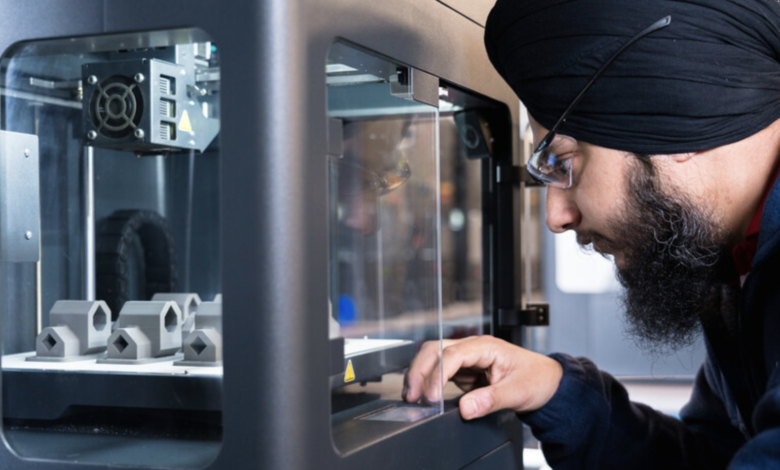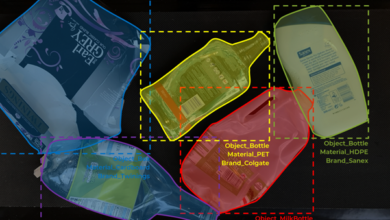
For all the promise of digital transformation and AI’s role in driving the factories of the future, its adoption is still relatively nascent when it comes to much of the manufacturing sector. There are a number of reasons for this, not least a lack of understanding of what AI actually is and the changes it will bring. Separating the facts from the (science) fiction can be a challenge. Confusion, coupled with uncertainty, breeds fears and misconceptions whether that’s around security risks, job losses, losing control and what the technology can and cannot do.
Ted Plummer, principal product manager, and resident AI expert at industrial 3D printing company, Markforged, helps bust some of the most common myths to set the record straight about AI and what it truly means for manufacturers.
Myth 1: AI is the end goal
There is a common misconception that AI itself is a benefit – I’ve had countless conversations with customers who have misconstrued the fact that AI is a mechanism, not a benefit. I’ve heard “I’ll wait until it ‘does AI’” more times than I can count. The reality is that the benefit of artificial intelligence is not the process itself, but – like any kind of data analytics – the value of AI stems from its ability to solve problems faster, speeding up production. AI is the how not the why. In the case of 3D printing, for example, technologies like Markforged’s Blacksmith use closed-loop machine learning to correct for process deviations to ensure manufacturers get the right part every time, without the need for costly and time-consuming human inspection.
The second part of the AI equation is federated learning. Apple or Android smartphones use federated learning technology to improve with every text message typed based on how both individual and collective users interact with their keypads. Similarly, our network of 10,000+ securely connected 3D printers applies this AI technology to allow each machine to ‘get smarter’ with every print – all while maintaining the highest standards of customer data privacy, confidentiality, and integrity. By analysing the data from the ‘fleet’ of printers, AI can spot corrections or tweaks that are being made regularly – for example where overhead angles or infill patterns aren’t quite right. These opportunities for improvements can then be fed back into the system, improving the collective output of the printers without the need for human intervention.
Myth 2: AI is not secure and relies on proprietary data
There is a misconception that because AI relies on data, that it requires those using it to share their intellectual property (IP) to derive benefit from it. This is not the case. When it comes to AI in 3D printing, customer IP and part data stay separate within secure boundaries. It is not this proprietary information that feeds into the federated learning described above but anonymised metadata. It is the information that is essentially collected into a ‘reservoir’ of data that allows the machines to learn and improve. It is impossible to recreate any of the source IP from the collective data.
As with any data-powered technology, however, security is still of the utmost importance when it comes to using AI. It is essential to ensure it is based on a secure platform with customer data integrity and confidentiality in place – and an ISO 27001 certification is a great way to demonstrate you have invested in managing risk.
Myth 3: AI is always changing, making its outcomes unpredictable and unsuitable for achieving repeatability
For highly regulated industries such as aerospace, repeatability is paramount. When creating parts for aircraft, for example, the 10,000thprinted part needs to be exactly the same as the very first. For this reason, AI – and specifically federated learning – is often dismissed by regulated industries. Its benefits of incremental learning and improvements are seen to be at odds with the stringent, life-critical safety requirements.
Industries like aerospace where repeatability is required can still benefit from AI-driven technologies, however. It can be used for design iterations, helping to tweak and perfect aircraft parts in the early phases of development, for example. Once the team is happy with the parameters of the part, the system can then be ‘locked’ to ensure no further changes are made or data updates are incorporated from the fleet. At this stage, the technology can then be used as a verification tool to ensure there are no derivations in the printing process and that each part is exactly the same as the last.
In the longer term, the same technology will be able to ensure even greater repeatability by detecting and compensating for system behavioural changes like a lack of lubrication or wear and tear on machines.
Myth 4: AI will replace humans and take our jobs
This myth still resides very much in the world of science fiction. I say, let the machine take over when it comes to machine-related problems! Very few operators, engineers, or industrial designers would complain if machines could ‘self-heal’, thus relieving them of mundane, troubleshooting tasks and letting them get on with their day-to-day jobs.
Rather than making us lazy or redundant, using AI and machine learning is helping to fuel innovation and smarter working practices. In manufacturing or product design, instead of focusing on more process-driven ‘what’ and ‘how’ issues, it allows engineers to ask the ‘why’ and ‘what if’ questions and to explore the implications of different scenarios when it comes to increasing efficiency or creating new products – ultimately leading to greater business opportunities.
Myth 5: The cost of AI is hindering its adoption
There are two common responses I hear when I’m speaking to customers about our AI-powered machines: (1) “I can’t believe how affordable it is!” or (2) “It costs too much!” As with any developing technology, there are those that can see the value it can provide and those that see it as an expensive luxury. We are starting to see this change as AI advances beyond the early adopter phase. Those championing AI-driven solutions on the factory floor focus on the value it can bring – essentially allowing machines to solve machine-related problems, freeing up engineers and operators to invest their efforts into innovation, product development and other human-related endeavors.
It is important to remember that many of these myths exist because not all AI is created equally. To be an effective tool, AI requires access to large amounts of data – machines can’t ‘learn’ without a steady stream of reliable data. Before you invest in any AI-driven technology make sure it has a reliable data source that can scale along with the machines it is powering.





